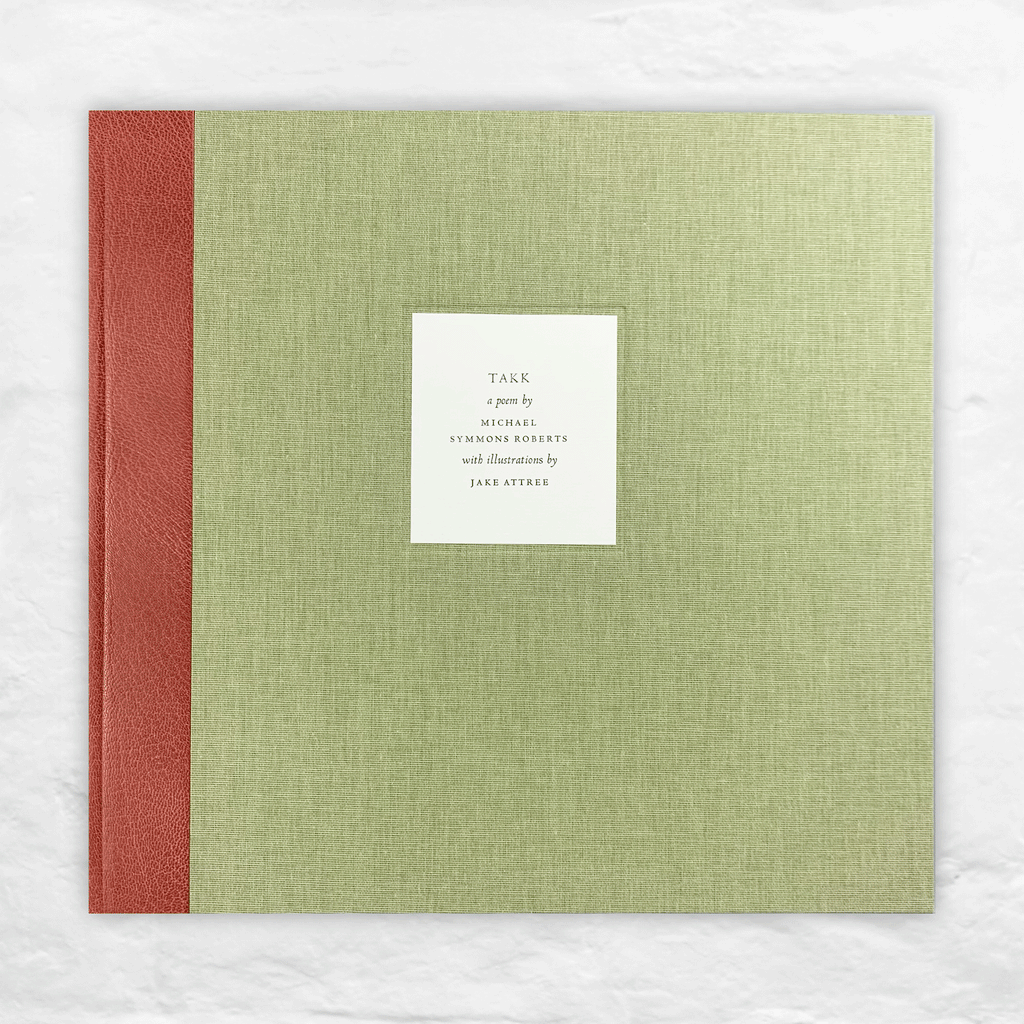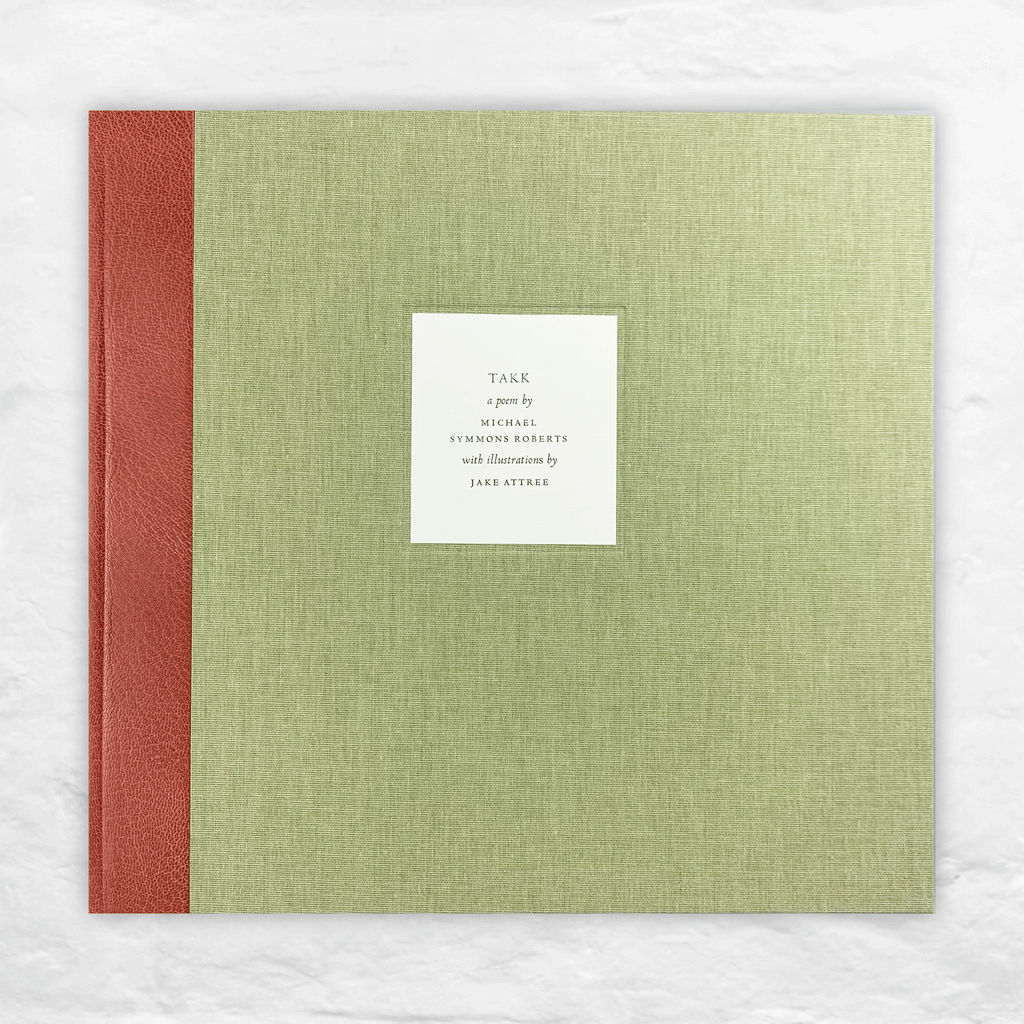Takk by Michael Symmons Roberts, with illustrations by Jake Attree (limited edition of 75, each signed & numbered by Roberts & Attree)
£95.00
This edition of Takk is limited to 75 copies, each individually numbered and signed by both Roberts and Attree. The poet and artist have responded to Brughel's painting 'The Procession to Calvary'. Roberts has written a long poem which is complemented by 13 superb colour images from Attree.
The edition, designed and printed by John Grice of the Evergreen Press, Stonehouse, Gloucestershire, was printed from Centaur 16 point type on Zerkall paper and bound at the Fine Book Bindery, Wellingborough, England.
Takk was masterminded by Andrew Moorhouse. A Rochdale man with no 'in' to the publishing world, Moorhouse was inspired by the words of John Updike: “a book is beautiful in its relation to the human hand, to the human eye, to the human brain, and to the human spirit." Thus galvanised, Moorhouse began his Fine Press Poetry imprint - a true labour of love that has produced several beautiful limited edition volumes, several of which we are delighted to sell on this site.
About Michael Symons Roberts
His poetry has won the Forward Prize, the Costa Poetry Prize and the Whitbread Poetry Award, and been shortlisted for the Griffin International Poetry Prize and the T.S. Eliot Prize. He has received major awards from the Arts Council and the Society of Authors. He is a Fellow of the Royal Society of Literature, and of the English Association.
He has published two novels, and is Professor of Poetry at Manchester Metropolitan University.
About Jake Attree
Born in York, Attree graduated from Liverpool College of Art and the Royal Academy Schools. He lives with his wife in Saltaire, moments from Salts Mill. His studio is in Dean Clough, Halifax.
Yorkshire’s geology, history and culture are woven into Attree’s creative DNA, but while he was born in the North and lives there still, Attree dislikes the term “northern artist”, if only because it is hopelessly limited:
'I was initially, and still am, deeply influenced by the art of Northern Europe, principally because, I suppose, I am northern European. The light Rubens responded to in seventeenth-century Flanders later influenced Constable in nineteenth-century Suffolk, and later still, Constable opened my eyes to the light of the flat, water meadow-surrounded city of York.
As I developed and dug deeper, and began to look wider, at the magnificent bronze sculpture of Benin, for example; at Iznik tiles and the beauty woven into Persian carpets, it slowly began to dawn on me that this is one culture; an artist from one country recognising the gift offered by another (or appropriated from it, depending on one’s point of view). I recognised in this diverse range of expression one voice that speaks of the need to assert our equality of achievement and purpose, our need to assert a common humanity.'









